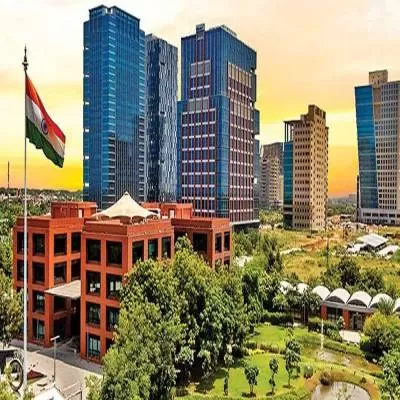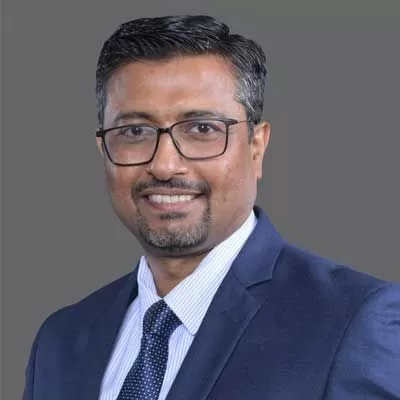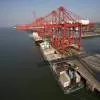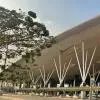- Home
- Technology
- Tech-tonic shift
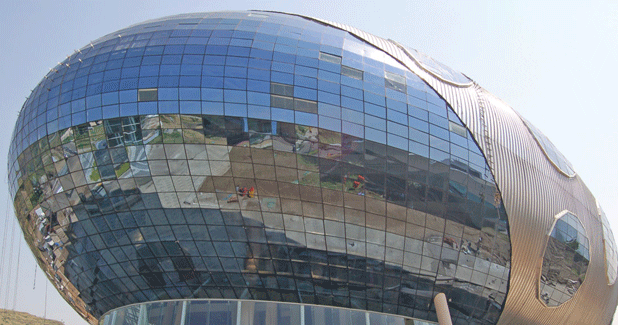
Tech-tonic shift
The world knows it and so must you - the Indian IT sector is one of the fastest growing IT markets in the Asia-Pacific. According to NASSCOM, the Indian IT industry is poised to become a $225 billion industry by 2020 and is estimated to provide direct employment to 10 million and indirect employment to 20 million by that time. A natural outcome will be the emergence of additional IT parks and SEZs in the country. Today, most IT parks in the country are located largely in and around Bengaluru, Chennai, Delhi, Hyderabad, Pune, Mumbai and Kolkata, with Bengaluru leading the pack.
Considering the market, many private national and local real-estate developers have been undertaking the construction of IT parks and SEZs, like DLF, L&T, RMZ Corp, Mantri Developers, K Raheja Corp, Ascendas, RNA Corp, Tata Realty, Shapoorji Pallonji, Olympia, Divyasree Infrastructure and Emaar, among others. In addition, several state governments and their agencies have also been involved in the development of IT hubs, such as the Andhra Pradesh Industrial Infrastructure Corporation, Karnataka Industrial & Areas Development Board, Karnataka Industrial Areas Development Board, Tamil Nadu Industrial Development Corporation, City and Industrial Development Corporation of Maharashtra Ltd and Maharashtra Industrial Development Corporation (MIDC). For instance, MIDC, whose basic role is to provide infrastructure for the development of IT parks, has invested around Rs 6,348 lakh in the development of these parks in Kolhapur (Rs 173.05 lakh), Nagpur (Rs 2,357 lakh) and Pune (Rs 3,818 lakh).
Demand drivers
The main growth drivers for IT parks indirectly and the IT and ITeS industry directly have been the low-cost advantage, friendly business environment and the availability of skilled manpower, all of which have been attracting global corporations. According to the Ministry of Communications and Information Technology, India is considered the premier destination for global IT and ITeS outsourcing, accounting for almost 55 per cent of the international sourcing market in 2010.
¨Currently, India is the IT-ITES hub for about 125 of the Fortune 500 companies,¨ says Amit Grover, National Director, DLF Offices, DLF Ltd. ¨Some of the large corporations, traditionally known for outsourcing multi-year, multi-million dollar contracts, are also setting up their centres in India. Evidently, growth of this sector will generate considerable demand for office property. Further, the working population in this sector has tripled from 1 million in 2004-05 to 3 million in 2012-13 and is expected to reach 10 million by 2020, thus inevitably increasing demand for office space. As the numbers show, this sector is the biggest office occupier in the country, comprising about 70 per cent of the entire office stock (including IT Parks and SEZs).¨ DLF has developed seven IT parks; one in Chandigarh (DLF IT Park), two in Kolkata (DLF IT Park I and DLF IT SEZ), one in Chennai (DLF Cybercity, IT SEZ), one in Hyderabad (DLF Cybercity, IT SEZ), and two in Gurgaon (World Tech Park, IT SEZ and DLF Cybercity).
For his part, Viral Desai, Director-Occupier Solutions, Knight Frank India, says, ¨Availability of skilled IT professionals and the Government´s extremely supportive policy and tax incentives have been the major demand drivers for the growth of the IT/ITes sector, which in turn has led to the development of IT parks and SEZs.¨
Apart from growing demand, the sector is also witnessing some changes in the design and development of IT parks, according to AN Venugopal, Managing Director-Development, RMZ Corp. ¨IT park design is becoming increasingly client-centric to address business requirements and ensure that the comfort and productivity of users are enhanced,¨ he says. ¨The design primarily focuses on the working area and logistics of movement. Enhanced importance is given to areas outside like the bay (food court, commercial hub) and active zone (fitness, traffic movement). From the construction angle, the move is towards standardised construction to optimise cost and speed with less reliance on skilled manpower. Green building measures for optimum utilisation of resources and reduction of future maintenance are also on the increase.¨ RMZ Corp has developed several IT parks, with the majority in Bengaluru such as RMZ Ecoworld, RMZ Infinity, The Millenia, RMZ Pinnacle and RMZ Icon.
Proactive policies
The Indian Government´s supportive policy has no doubt been a key contributing factor to the successful development of several IT parks and SEZs. Setting up Software Technology Parks of India (STPI) under the Ministry of Communications and Information Technology to manage the Software Technology Park scheme was a major step in this direction. The scheme provides various benefits to registered units, including 100-per-cent foreign equity, tax incentives and duty-free import and indigenous procurement. Besides regulating the STP scheme, STPI centres also provide a variety of services, including high-speed data communication, incubation facility, consultancy, network monitoring, data centre and data hosting. Several IT parks have come up under this scheme.
Many state governments too have been proactive by providing FSI incentives and flexible land use policies that permit the developer to cluster IT office space construction with the construction of other facilities such as shopping complex, hotels, eateries and housing. Such bundling makes the project financially more attractive for developers. ¨Most state governments have IT policies and development schemes to attract investment in IT parks,¨ says Grover. ¨In addition, the central SEZ scheme has been a driver to steer the growth of IT parks pan-India. The government regulation to reduce minimum area restrictions for SEZs is likely to enhance developer interest in SEZ projects.¨
In Maharashtra, MIDC, which has developed 32 IT hubs under the Maharashtra IT &ITES Policy 2009, has identified various industrial areas in Pune, Nagpur, Aurangabad and Thane for the development of IT parks.
The government has also adopted several policy mechanisms to encourage PPP in this sector. Two major IT parks that have been developed under the PPP model are Hi-Tech City Hyderabad, a JV of L&T Infocity Ltd and Andhra Pradesh Industrial Infrastructure Corporation Ltd, and International Tech Park Bengaluru, a JV involving Tata Industries, the Singapore Consortium and the Karnataka Industrial Areas Development Board. (Later, Ascendas bought over Tata's stake in the park.) However, PPP has not gained much popularity in this sector, say industry professionals. ¨PPP has been successful in infra projects like roads, where the National Highways Authority of India (NHAI) has been controlling road development at the national level,¨ opines Venugopal. ¨We need a similar independent, empowered regulatory framework for IT parks to attract more private investments.¨
Other areas also need attention, such as speeding up approvals and environmental approvals at national and state levels by setting up single-window clearance and providing additional tax incentives and new funding instruments. ¨There should be relaxation of the minimum alternate tax (MAT) that has made SEZs less attractive for developers and occupiers,¨ points out Grover. ¨New instruments of funding should be permitted like the Real-Estate Investment Trusts, which could provide a n additional exit route for investors and enable retail money to be channelled into the sector through a regulated network. This would spur capital inflows and bring institutional credibility. Another critical factor is foreign investment, primarily on account of the capital-intensive nature of the sector. Unlike developed nations, concepts such as real-estate mutual funds and investment trusts are still in infancy in India. Such challenges limit sources of funding, which in turn restrict private-sector involvement in large-scale construction activity.¨
Opening opportunities
That said; there are definitely opportunities galore; many more IT parks are on the cards with companies like Infosys Technologies, Wipro and others planning to set up new projects. ¨As the IT industry grows in size, the demand for commercial real estate is likely to increase,¨ affirms Grover. ¨Some growth will also be driven by captive IT/ITES and e-commerce companies which, at the back end, will be occupying offices to service e-commerce clients and develop technology services.¨
MIDC also proposes to develop an IT zone and five-star industrial area in Kolhapur and Aurangabad. ¨All the incentives under Maharashtra IT & ITES Policy 2009 will be applicable for these projects,¨ reveals Anand Rayate, Joint CEO (IT), MIDC. ¨MIDC has undertaken a promotional drive to attract IT companies to invest in Maharashtra, particularly in Pune, Thane and Aurangabad. Along with the district administration, we had arranged two IT conferences in Pune and Bengaluru in 2010. The response was good and many companies have submitted their applications.¨
¨There is a stock of 450 million sq ft of office space pan-India,¨ Desai points out. ¨Of this, 65 per cent will be absorbed by the IT/ITes sector. This will continue to offer great opportunities for developers. In addition, IT parks often trigger the development of infrastructure and real estate in the area.¨
For instance, Whitefield in Bengaluru, Karnataka, traditionally a residential suburb, witnessed fast growth with the entry of IT parks with developers launching residential projects, hotels and malls in this submarket. Today, it is one of the most preferred IT and residential suburbs of Bengaluru. Likewise, when Noida turned into an IT hub from an industrial area, the suburb witnessed large-scale infrastructure development and improved connectivity with Delhi with the extension of the road network and metro railway, along with the growth of several residential units. The same is the case with the southern suburb of Chennai covering the Great Southern Trunk Road, Old Mahabalipuram Road and East Coast Road. This precinct has been witnessing fast development in recent years with the growth in IT and IT SEZ parks, including large, integrated residential townships.
Future forward While there is immense opportunity ahead, there are challenges too. Apart from surmounting delays in approvals and clearances, developers have to counter long gestation periods and related risks as well as deal with high investments. Other challenges include shortage of skilled manpower and poor infrastructural support. ¨Shortage of skilled manpower is a real challenge,¨ agrees Venugopal. ¨Private players should come forward to set up skill training institutes for youngsters. We also require robust and reliable systems to ensure power, water, road infrastructure and a good public transport system. There is also a need for institutionalised and transparent governance of IT parks.¨ Today, the high concentration of IT parks in the metros has resulted in infrastructural and other problems like heavy traffic jams, high land and operating costs, and migration of resources. As the industry grows and space in traditional areas begins to diminish, IT park development may inevitably move to other areas. Some software companies have already started moving to Tier-2 cities like Ahmedabad, Kochi, Coimbatore and Lucknow. However, the biggest concern in Tier-2 cities is the poor quality of physical and social infrastructure and lack of connectivity, which will have to be addressed by the government in charge.
Indeed, the development of the IT sector and IT parks is dependent on a number of other sectors like telecommunications, roads, airports and venture capital or private equity; suitable policies need to be in place to improve efficiencies and service levels in these sectors. Above all, this underlines the importance of supportive and proactive government policies and their efficient implementation for the sector to truly thrive.
Quick Bytes
- India is the IT-ITES hub for about 125 of the Fortune 500 companies.
- IT Sector: Working population to reach
- 10 million by 2020.
- IT destinations: Bengaluru, Chennai, Delhi, Hyderabad, Pune, Mumbai and Kolkata.
- Demand drivers: Availability of skilled IT professionals, government´s extremely
supportive policy and tax incentives. Major existing IT/IT SEZ parks in India
- Bengaluru: International Tech Park, Brigade Tech Park, Sigma IT Park, Bhoruka Tech Park, Bagmane Tech Park, Prestige Tech Park II and III, Cyber Park, Venkatadri IT Park, RMZ Infinity, The Millenia, RMZ Pinnacle
- Chennai: International Tech Park, Chennai, SP Infocity, RMZ Millenia, Tidel Park, Olympia Tech Park, SRM Tech Park, L&T Estancia IT SEZ, DLF Cybercity-IT SEZ, CyberVale IT SEZ Park, SIPCOT IT Park
- Hyderabad: Hi-Tech City, DLF Cybercity, IT SEZ
- Kolkata: DLF IT Park I, DLF IT SEZ, Unitech Infospace (SEZ), The Millennium City IT Park
- Delhi NCR: Delhi IT Park; Noida: Logix Cyber Park, DLF IT Park, Stellar IT Park, Unitech Infospace SEZ, 3C Oxygen SEZ; Gurgaon: World Tech Park, IT SEZ (DLF) DLF Cybercity
- Pune: Rajiv Gandhi Infotech Park, Kharadi Knowledge Park, EON IT Park, Software Technology Park, Pune Infotech Park
- Mumbai: Santacruz Electronics Export Processing Zone (SEEPZ ), Marol Industrial and Information Technology Park, Technopolis Knowledge Park
- Navi Mumbai: International Infotech Park, Millennium Business Park, Dronagiri IT Hardware Park, Talwade Software Park, Airoli Knowledge Park, Belapur International Technology Park, International Infotech Park
- Other places: Rajiv Gandhi Chandigarh Technology Park, Chandigarh; Crystal IT Park, Indore; Technopark, Trivandrum; InfoPark, Thrissur; Infopark, Kochi; DLF IT Park, Chandigarh; The Infocity IT Park, Gandhinagar; Software Technology Park, Nagpur; Parsodi IT Park, Nagpur
- IT
- SEZs
- NASSCOM
- DLF
- L&T
- RMZ Corp
- Mantri Developers
- K Raheja Corp
- Ascendas
- RNA Corp
- Tata Realty
- Shapoorji Pallonji
- Olympia
- Divyasree Infrastructure
- Emaar
- Andhra Pradesh
- Industrial Infrastructure Corporation
- Karnataka Industrial Areas Development Board
- Tamil Nadu Industrial Development Corporation
- Maharashtra Industrial Development Corporation
- MIDC
- Viral Desai
- Knight Frank Indi
With the Indian IT sector being one of the fastest growing in the Asia-Pacific region, there are opportunities galore for the development of IT parks and SEZs. The world knows it and so must you - the Indian IT sector is one of the fastest growing IT markets in the Asia-Pacific. According to NASSCOM, the Indian IT industry is poised to become a $225 billion industry by 2020 and is estimated to provide direct employment to 10 million and indirect employment to 20 million by that time. A natural outcome will be the emergence of additional IT parks and SEZs in the country. Today, most IT parks in the country are located largely in and around Bengaluru, Chennai, Delhi, Hyderabad, Pune, Mumbai and Kolkata, with Bengaluru leading the pack. Considering the market, many private national and local real-estate developers have been undertaking the construction of IT parks and SEZs, like DLF, L&T, RMZ Corp, Mantri Developers, K Raheja Corp, Ascendas, RNA Corp, Tata Realty, Shapoorji Pallonji, Olympia, Divyasree Infrastructure and Emaar, among others. In addition, several state governments and their agencies have also been involved in the development of IT hubs, such as the Andhra Pradesh Industrial Infrastructure Corporation, Karnataka Industrial & Areas Development Board, Karnataka Industrial Areas Development Board, Tamil Nadu Industrial Development Corporation, City and Industrial Development Corporation of Maharashtra Ltd and Maharashtra Industrial Development Corporation (MIDC). For instance, MIDC, whose basic role is to provide infrastructure for the development of IT parks, has invested around Rs 6,348 lakh in the development of these parks in Kolhapur (Rs 173.05 lakh), Nagpur (Rs 2,357 lakh) and Pune (Rs 3,818 lakh). Demand drivers The main growth drivers for IT parks indirectly and the IT and ITeS industry directly have been the low-cost advantage, friendly business environment and the availability of skilled manpower, all of which have been attracting global corporations. According to the Ministry of Communications and Information Technology, India is considered the premier destination for global IT and ITeS outsourcing, accounting for almost 55 per cent of the international sourcing market in 2010. ¨Currently, India is the IT-ITES hub for about 125 of the Fortune 500 companies,¨ says Amit Grover, National Director, DLF Offices, DLF Ltd. ¨Some of the large corporations, traditionally known for outsourcing multi-year, multi-million dollar contracts, are also setting up their centres in India. Evidently, growth of this sector will generate considerable demand for office property. Further, the working population in this sector has tripled from 1 million in 2004-05 to 3 million in 2012-13 and is expected to reach 10 million by 2020, thus inevitably increasing demand for office space. As the numbers show, this sector is the biggest office occupier in the country, comprising about 70 per cent of the entire office stock (including IT Parks and SEZs).¨ DLF has developed seven IT parks; one in Chandigarh (DLF IT Park), two in Kolkata (DLF IT Park I and DLF IT SEZ), one in Chennai (DLF Cybercity, IT SEZ), one in Hyderabad (DLF Cybercity, IT SEZ), and two in Gurgaon (World Tech Park, IT SEZ and DLF Cybercity). For his part, Viral Desai, Director-Occupier Solutions, Knight Frank India, says, ¨Availability of skilled IT professionals and the Government´s extremely supportive policy and tax incentives have been the major demand drivers for the growth of the IT/ITes sector, which in turn has led to the development of IT parks and SEZs.¨ Apart from growing demand, the sector is also witnessing some changes in the design and development of IT parks, according to AN Venugopal, Managing Director-Development, RMZ Corp. ¨IT park design is becoming increasingly client-centric to address business requirements and ensure that the comfort and productivity of users are enhanced,¨ he says. ¨The design primarily focuses on the working area and logistics of movement. Enhanced importance is given to areas outside like the bay (food court, commercial hub) and active zone (fitness, traffic movement). From the construction angle, the move is towards standardised construction to optimise cost and speed with less reliance on skilled manpower. Green building measures for optimum utilisation of resources and reduction of future maintenance are also on the increase.¨ RMZ Corp has developed several IT parks, with the majority in Bengaluru such as RMZ Ecoworld, RMZ Infinity, The Millenia, RMZ Pinnacle and RMZ Icon. Proactive policies The Indian Government´s supportive policy has no doubt been a key contributing factor to the successful development of several IT parks and SEZs. Setting up Software Technology Parks of India (STPI) under the Ministry of Communications and Information Technology to manage the Software Technology Park scheme was a major step in this direction. The scheme provides various benefits to registered units, including 100-per-cent foreign equity, tax incentives and duty-free import and indigenous procurement. Besides regulating the STP scheme, STPI centres also provide a variety of services, including high-speed data communication, incubation facility, consultancy, network monitoring, data centre and data hosting. Several IT parks have come up under this scheme. Many state governments too have been proactive by providing FSI incentives and flexible land use policies that permit the developer to cluster IT office space construction with the construction of other facilities such as shopping complex, hotels, eateries and housing. Such bundling makes the project financially more attractive for developers. ¨Most state governments have IT policies and development schemes to attract investment in IT parks,¨ says Grover. ¨In addition, the central SEZ scheme has been a driver to steer the growth of IT parks pan-India. The government regulation to reduce minimum area restrictions for SEZs is likely to enhance developer interest in SEZ projects.¨ In Maharashtra, MIDC, which has developed 32 IT hubs under the Maharashtra IT &ITES Policy 2009, has identified various industrial areas in Pune, Nagpur, Aurangabad and Thane for the development of IT parks. The government has also adopted several policy mechanisms to encourage PPP in this sector. Two major IT parks that have been developed under the PPP model are Hi-Tech City Hyderabad, a JV of L&T Infocity Ltd and Andhra Pradesh Industrial Infrastructure Corporation Ltd, and International Tech Park Bengaluru, a JV involving Tata Industries, the Singapore Consortium and the Karnataka Industrial Areas Development Board. (Later, Ascendas bought over Tata's stake in the park.) However, PPP has not gained much popularity in this sector, say industry professionals. ¨PPP has been successful in infra projects like roads, where the National Highways Authority of India (NHAI) has been controlling road development at the national level,¨ opines Venugopal. ¨We need a similar independent, empowered regulatory framework for IT parks to attract more private investments.¨ Other areas also need attention, such as speeding up approvals and environmental approvals at national and state levels by setting up single-window clearance and providing additional tax incentives and new funding instruments. ¨There should be relaxation of the minimum alternate tax (MAT) that has made SEZs less attractive for developers and occupiers,¨ points out Grover. ¨New instruments of funding should be permitted like the Real-Estate Investment Trusts, which could provide a n additional exit route for investors and enable retail money to be channelled into the sector through a regulated network. This would spur capital inflows and bring institutional credibility. Another critical factor is foreign investment, primarily on account of the capital-intensive nature of the sector. Unlike developed nations, concepts such as real-estate mutual funds and investment trusts are still in infancy in India. Such challenges limit sources of funding, which in turn restrict private-sector involvement in large-scale construction activity.¨ Opening opportunities That said; there are definitely opportunities galore; many more IT parks are on the cards with companies like Infosys Technologies, Wipro and others planning to set up new projects. ¨As the IT industry grows in size, the demand for commercial real estate is likely to increase,¨ affirms Grover. ¨Some growth will also be driven by captive IT/ITES and e-commerce companies which, at the back end, will be occupying offices to service e-commerce clients and develop technology services.¨ MIDC also proposes to develop an IT zone and five-star industrial area in Kolhapur and Aurangabad. ¨All the incentives under Maharashtra IT & ITES Policy 2009 will be applicable for these projects,¨ reveals Anand Rayate, Joint CEO (IT), MIDC. ¨MIDC has undertaken a promotional drive to attract IT companies to invest in Maharashtra, particularly in Pune, Thane and Aurangabad. Along with the district administration, we had arranged two IT conferences in Pune and Bengaluru in 2010. The response was good and many companies have submitted their applications.¨ ¨There is a stock of 450 million sq ft of office space pan-India,¨ Desai points out. ¨Of this, 65 per cent will be absorbed by the IT/ITes sector. This will continue to offer great opportunities for developers. In addition, IT parks often trigger the development of infrastructure and real estate in the area.¨ For instance, Whitefield in Bengaluru, Karnataka, traditionally a residential suburb, witnessed fast growth with the entry of IT parks with developers launching residential projects, hotels and malls in this submarket. Today, it is one of the most preferred IT and residential suburbs of Bengaluru. Likewise, when Noida turned into an IT hub from an industrial area, the suburb witnessed large-scale infrastructure development and improved connectivity with Delhi with the extension of the road network and metro railway, along with the growth of several residential units. The same is the case with the southern suburb of Chennai covering the Great Southern Trunk Road, Old Mahabalipuram Road and East Coast Road. This precinct has been witnessing fast development in recent years with the growth in IT and IT SEZ parks, including large, integrated residential townships. Future forward While there is immense opportunity ahead, there are challenges too. Apart from surmounting delays in approvals and clearances, developers have to counter long gestation periods and related risks as well as deal with high investments. Other challenges include shortage of skilled manpower and poor infrastructural support. ¨Shortage of skilled manpower is a real challenge,¨ agrees Venugopal. ¨Private players should come forward to set up skill training institutes for youngsters. We also require robust and reliable systems to ensure power, water, road infrastructure and a good public transport system. There is also a need for institutionalised and transparent governance of IT parks.¨ Today, the high concentration of IT parks in the metros has resulted in infrastructural and other problems like heavy traffic jams, high land and operating costs, and migration of resources. As the industry grows and space in traditional areas begins to diminish, IT park development may inevitably move to other areas. Some software companies have already started moving to Tier-2 cities like Ahmedabad, Kochi, Coimbatore and Lucknow. However, the biggest concern in Tier-2 cities is the poor quality of physical and social infrastructure and lack of connectivity, which will have to be addressed by the government in charge. Indeed, the development of the IT sector and IT parks is dependent on a number of other sectors like telecommunications, roads, airports and venture capital or private equity; suitable policies need to be in place to improve efficiencies and service levels in these sectors. Above all, this underlines the importance of supportive and proactive government policies and their efficient implementation for the sector to truly thrive. Quick Bytes India is the IT-ITES hub for about 125 of the Fortune 500 companies. IT Sector: Working population to reach 10 million by 2020. IT destinations: Bengaluru, Chennai, Delhi, Hyderabad, Pune, Mumbai and Kolkata. Demand drivers: Availability of skilled IT professionals, government´s extremely supportive policy and tax incentives. Major existing IT/IT SEZ parks in India Bengaluru: International Tech Park, Brigade Tech Park, Sigma IT Park, Bhoruka Tech Park, Bagmane Tech Park, Prestige Tech Park II and III, Cyber Park, Venkatadri IT Park, RMZ Infinity, The Millenia, RMZ Pinnacle Chennai: International Tech Park, Chennai, SP Infocity, RMZ Millenia, Tidel Park, Olympia Tech Park, SRM Tech Park, L&T Estancia IT SEZ, DLF Cybercity-IT SEZ, CyberVale IT SEZ Park, SIPCOT IT Park Hyderabad: Hi-Tech City, DLF Cybercity, IT SEZ Kolkata: DLF IT Park I, DLF IT SEZ, Unitech Infospace (SEZ), The Millennium City IT Park Delhi NCR: Delhi IT Park; Noida: Logix Cyber Park, DLF IT Park, Stellar IT Park, Unitech Infospace SEZ, 3C Oxygen SEZ; Gurgaon: World Tech Park, IT SEZ (DLF) DLF Cybercity Pune: Rajiv Gandhi Infotech Park, Kharadi Knowledge Park, EON IT Park, Software Technology Park, Pune Infotech Park Mumbai: Santacruz Electronics Export Processing Zone (SEEPZ ), Marol Industrial and Information Technology Park, Technopolis Knowledge Park Navi Mumbai: International Infotech Park, Millennium Business Park, Dronagiri IT Hardware Park, Talwade Software Park, Airoli Knowledge Park, Belapur International Technology Park, International Infotech Park Other places: Rajiv Gandhi Chandigarh Technology Park, Chandigarh; Crystal IT Park, Indore; Technopark, Trivandrum; InfoPark, Thrissur; Infopark, Kochi; DLF IT Park, Chandigarh; The Infocity IT Park, Gandhinagar; Software Technology Park, Nagpur; Parsodi IT Park, Nagpur


